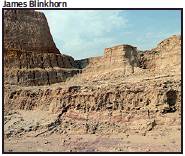Thar desert
This is a collection of articles archived for the excellence of their content. |
“Lost” river near Bikaner
Findings, as in 2020
Ruchika Uniyal, October 22, 2020: The Times of India

From: Ruchika Uniyal, October 22, 2020: The Times of India
An international team of researchers has found a “lost” river that ran through the central Thar desert, near Bikaner, 1,72,000 years ago. The river was likely a lifeline for Stone Age populations, helping them thrive in what is now an arid region, while also serving as an important corridor for human migration, according to the research which represents the oldest directly dated phase of river activity in the Thar region.
The new findings — published online in the ‘Quaternary Science Reviews’ journal ahead of its print publication — push back the previous evidence for river activity in Thar by up to 80,000 years.
Researchers from Germany’s Max Planck Institute for the Science of Human History (MPI-SHH), Anna University (Chennai) and Indian Institute of Science, Education and Research (IISER) in Kolkata studied deposits of river sands and gravels exposed by quarrying activity near Nal village, outside Bikaner, in 2014 and 2019.
“The key method we used is luminescence dating that enables us to calculate the age at which grains of quartz in river sands were last exposed to light,” James Blinkhorn at the MPI-SHH told TOI. “The previously oldest, well dated evidence for river activity in the Thar comes from the Luni Valley, which was active 80,000-90,000 years ago, with comparable evidence from further south in the Mahi, Sabarmati and Orsang valleys, where similar evidence for fluvial activity stretches back to 100 thousand years ago,” said Blinkhorn.
According to Hema Achyuthan, professor at Institute for Ocean Management, Anna University: “Thar may be a desert now but there are several paleo channels — where rivers would have once flown — in the region that are buried by sand dunes. In certain places, such as Nal, the gravel deposits are exposed and that helped us directly date one such river system for the first time.”